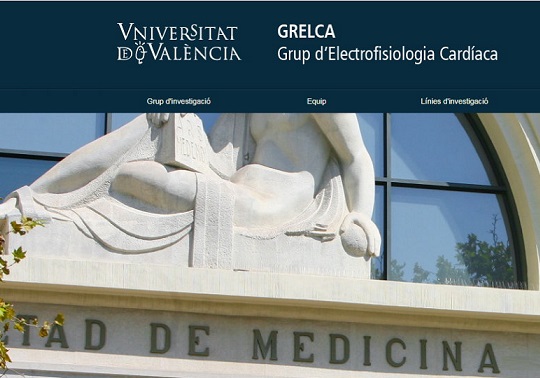
Lines of Research
- Experimental studies for the analysis of electrophysiological parameters linked to the establishment, maintenance and cessation of ventricular fibrillation. Analysis of the electrophysiological properties affecting the processes involved in the start, perpetuation and cessation of VF, an arrhythmia responsible for about 80% of all sudden cardiac deaths, the underlying mechanisms of which remain incompletely understood.
- Role of calcium homeostasis in arrhythmogenesis. Study of the electrophysiological effects of drugs acting on intracellular calcium dynamics. Analysis of the effects of alterations in calcium homeostasis on arrhythmogenesis. Search and study of the electrophysiological effects of drugs acting on intracellular calcium dynamics.
- Analysis of arrhythmogenic electrophysiological changes induced by ventricular mechanical stretch. Ventricular stretch, a pathophysiological condition present in situations involving pressure or volume overload of the cardiac chambers, generates proarrhythmogenic electrophysiological alterations. Search for and identification of pharmacological agents that counteract these effects.
- Basic mechanisms, diagnosis, prediction and prevention of cardiac damage in acute reperfused myocardial infarction. To advance methods of diagnosis and prevention of myocardial damage after acute myocardial infarction. The group will carry out an experimental analysis of the relationship between the characteristics of ischemia-reperfusion injury and the inducibility and maintenance of ventricular arrhythmias.
- Analysis of the protective electrophysiological effects of physical exercise in relation to the induction, maintenance and cessation of cardiac arrhythmias. Study of the protective electrophysiological effects of chronic physical exercise: influence of the autonomic nervous system and mitochondrial oxidative stress. Analysis of the effects on electrophysiological modifications induced by myocardial ischemia in relation to IKATP current.
- Effects of histone deacetylation inhibition on post-infarct remodelling of the arrhythmogenic substrate. Ischemia/reperfusion injury promotes proarrhythmogenic ventricular remodelling. The effects of histone deacetylase (DHA) enzyme inhibition on this process and its impact on electrophysiological properties and arrhythmogenesis will be discussed.
- Development of an animal model of metabolic syndrome and study of the possible associated cardiac electrical remodelling. Development of an animal model (New Zealand White rabbits) of metabolic syndrome and study of the impact of the combination of the different manifestations of the disease on cardiac electrical remodelling and its potential arrhythmogenic mechanisms.
- Development of tools for the recording and analysis of electrophysiological signals: multi-electrode devices and optical mapping systems. Development, updating and integration of tools for the recording, processing and analysis of cardiac electrophysiological signals based on multi-electrode devices and optical mapping systems (analysis of voltage and calcium signals).







